| Columns Retired Columns & Blogs |
Esoteric MG-20 loudspeaker Measurements
Sidebar 3: Measurements
The Esoteric MG-20's voltage sensitivity is specified as 89dB/2.83V/m. My B-weighted estimate on its tweeter axis agreed with this figure, which is a useful 2dB higher than average. The Esoteric's impedance (fig.1) remained above 4 ohms at all frequencies, and while the electrical phase angle covered a wide (±45°) range, as usual, the most extreme angles occurred when the impedance magnitude was fairly high. The MG-20 should therefore be a fairly easy speaker for the partnering amplifier to drive. The speaker will work well with relatively low-powered tubed designs, though the shape of the impedance trace suggests that it will sound brighter with such amplifiers than with typical solid-state models.
The traces in fig.1 are free from the small discontinuities that indicate the presence of cabinet panel resonances. The solid-feeling enclosure is indeed extremely inert; the only modes I could find lay at or above 650Hz and were low in level (fig.2).
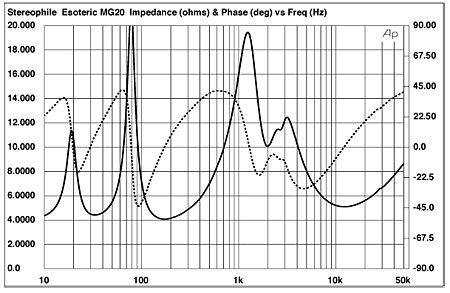
Fig.1 Esoteric MG-20, electrical impedance (solid) and phase (dashed). (2 ohms/vertical div.)
Fig.1 indicates that the tuning frequency of the front-facing reflex port is around 35Hz. The minimum-motion notch in the woofer's nearfield output (fig.3, blue trace), measured with the DRA Labs MLSSA system, lies a little lower in frequency, at 30Hz. The port's output (fig.3, green trace) covers a wider bandpass than usual, but is somewhat suppressed in level. Its upper-frequency rolloff is free from resonant artifacts, however. The woofer's upper-bass response is exaggerated a little in this graph, due to the assumptions made by the nearfield measurement technique, but is then flat through the midrange. The crossover to the tweeter appears to lie at 1.9kHz, as specified, but the woofer's rolloff above that frequency is broken by a couple of peaks, these presumably due to breakup modes in its magnesium cone. The tweeter's response (fig.3, red trace) shelves down in the top audio octave before rising to a peak at 29kHz. This peak is due to the dome's fundamental breakup resonance and is higher in frequency than is typical of a 1" aluminum dome, due to magnesium's combination of low mass and high stiffness. It should not unduly affect the sound quality.
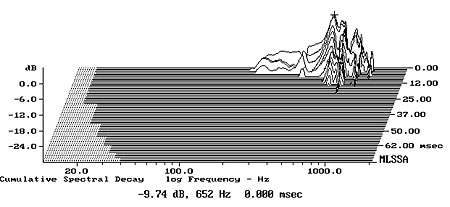
Fig.2 Esoteric MG-20, cumulative spectral-decay plot calculated from output of an accelerometer fastened to center of sidewall 10" from base (MLS driving voltage to speaker, 7.55V; measurement bandwidth, 2kHz).
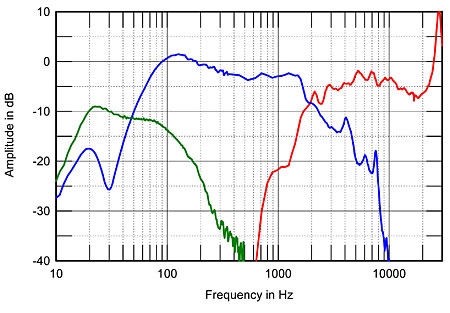
Fig.3 Esoteric MG-20, acoustic crossover on tweeter axis at 50", corrected for microphone response, with nearfield responses of woofers (blue) and port (green), plotted in the ratios of the square roots of their radiating areas below 350Hz and 500Hz, respectively.
To the left of fig.4 is shown the MG-20's farfield response, averaged across a 30° horizontal angle on the tweeter axis. The speaker is balanced slightly forward in the upper midrange. This is not so much as to add coloration, but I'm sure it contributes to the speaker's retrieval of recorded detail. Again, the top octave is a little suppressed. Once the upper-bass nearfield response bump is taken into account, the Esoteric speaker's bass is a little light in weight, the reflex port not adequately reinforcing the midbass region. It seems the speaker's designer has chosen low-frequency articulation over ultimate extension.
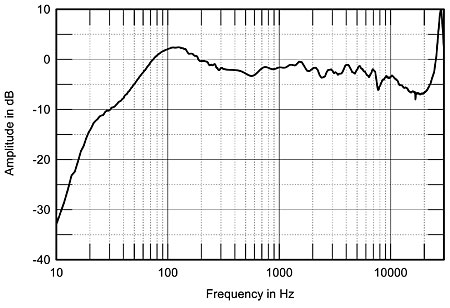
Fig.4 Esoteric MG-20, anechoic response on tweeter axis at 50", averaged across 30° horizontal window and corrected for microphone response, with complex sum of nearfield responses plotted below 300Hz.
The contour lines in the MG-20's plot of lateral dispersion (fig.5) are evenly spaced, and this graph shows very little evidence of the usual off-axis flare at the base of the tweeter's passband; in fact, a small and probably inconsequential notch develops in this region. The tweeter is not quite as directional at the top o its range as is usual with a 1" dome. In small rooms, this will compensate to some extent for the shelved-down on-axis output in this region. The Esoteric's vertical-dispersion plot (fig.6) indicates that the speaker's balance doesn't change appreciably over a ±5° window centered on the tweeter axis, which is just as well—at 32.5" from the floor, even when the MG-20 sits on its stand, the tweeter is placed a little low.
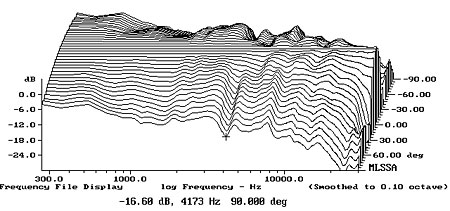
Fig.5 Esoteric MG-20, lateral response family at 50", normalized to response on tweeter axis, from back to front: differences in response 90–5° off axis, reference response, differences in response 5–90° off axis.
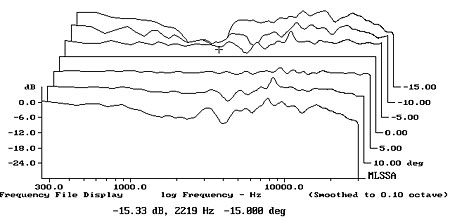
Fig.6 Esoteric MG-20, vertical response family at 50", normalized to response on tweeter axis, from back to front: differences in response 15–5° above axis, reference response, differences in response 5–15° below axis.
Fig.7 shows how this all adds up in my listening room. To generate this graph, I averaged forty 1/6-octave response measurements taken for the left and right speakers individually in a vertical rectangular grid centered on the position of my ears in my listening chair. (The program used was FuzzMeasure 2.0, running on my Macintosh laptop in conjunction with an EarthWorks omnidirectional microphone and a Metric Halo ULN-2 FireWire-connected audio interface.) The peak at 130Hz and the dip at 55Hz are residual room effects that have not been eliminated by the spatial averaging. Other than those features, the trace in fig.7 is remarkably even from the bottom of the midrange through to the mid-treble, above which the increasing absorptivity of the room's furnishings, in conjunction with the MG-20's shelved-down top octave, leads to a slight rolloff. The bass region is also shelved down, as I noted in my listening comments.
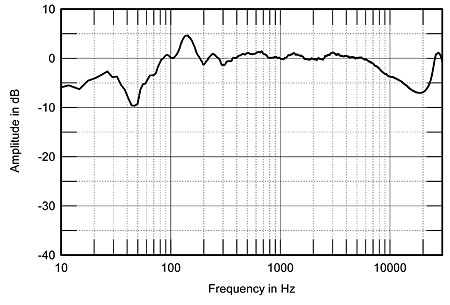
Fig.7 Esoteric MG-20, spatially averaged, 1/6-octave response in JA's listening room.
The Esoteric's step response on the tweeter axis (fig.8) indicates that all three drive-units are connected in positive acoustic polarity. The decay of the tweeter's output is smoothly integrated with the rise of the woofers' output, which correlates with the good integration of the drive-unit outputs in the frequency-response plot. The MG-20's farfield cumulative spectral-decay plot (fig.9) is generally very clean, though with some slight ridges of delayed energy evident between 1 and 2kHz. Looking at the cumulative spectral-decay plot of the woofers alone (fig.10), it can be seen that this delayed energy coincides with the frequency of a slight step in the drive-units' response. This is too low in frequency to be due to a breakup mode with a diaphragm as light and stiff as that of the MG-20's woofer; I suspect that it is a phenomenon of the cone-surround termination. There is an actual cone breakup visible at 7.6kHz, but it is well suppressed by the crossover's low-pass filter. I could just hear it as a low-level whistle on pink noise when I listened to the woofers on their own, but it was inaudible with the speaker played full-range.
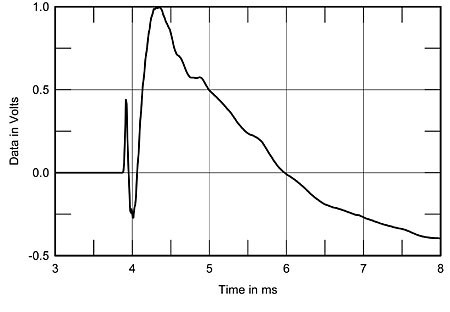
Fig.8 Esoteric MG-20, step response on tweeter axis at 50" (5ms time window, 30kHz bandwidth).
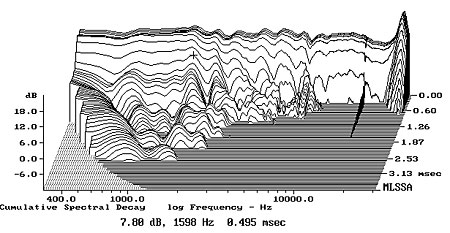
Fig.9 Esoteric MG-20, cumulative spectral-decay plot on tweeter axis at 50" (0.15ms risetime).
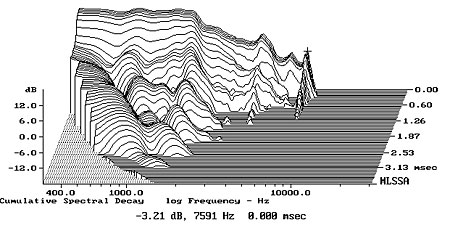
Fig.10 Esoteric MG-20 woofer, cumulative spectral-decay plot on tweeter axis at 50" (0.15ms risetime).
Overall, Esoteric's MG-20 offers excellent measured performance—that inert cabinet, flat frequency response, and clean spectral decay are all commendable—but its balance has clearly been optimized for clarity and detail rather than warmth and richness. It will require careful matching with room and system to get the best from it.—John Atkinson
- Log in or register to post comments




































